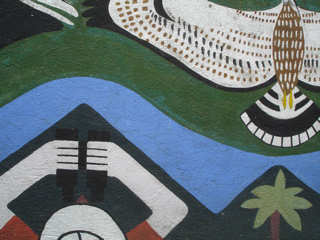 |
When Evan and I walked out to the garden yesterday to pick a Halloween pumpkin, we scared up a Winter Wren from the bushes. It chattered away at us while overhead groups of migrating Yellow-rumped Warblers and American Robins moved across the blue sky. White-throated Sparrows "seeped" from the neighbor's yard and a Ruby-crowned Kinglet flitted nervously in the reddish-leaved crabapple by the driveway. The last of the Boreal migrants are passing through here in Maine.
Just a little over a week ago I was in Mexico watching some of the Boreal migrants that had passed through Maine in September. I was at the North American Ornithological Conference (NAOC) in Veracruz with nearly 2,000 colleagues and including Genevieve from the Boreal Songbird Initiative office in Seattle who took the great photos I'm using here, and Rich MacDonald, a colleague from the Gulf of Maine Expedition Institute.
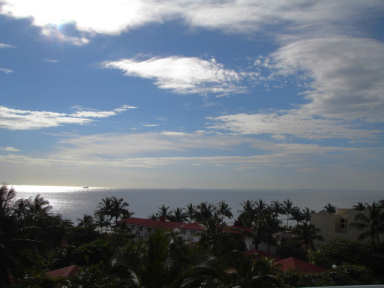 |
The NAOC conference was purposely scheduled to coincide with one of the world's most spectacular migratory phenomena and one of the world's last great spectacles of wildlife abundance. Veracruz has been called the home of the River of Raptors and it really is! As many as four million hawks and vultures migrate through this narrow region where the mountains come close to the coast, most within a period of several weeks. This may amount to virtually the entire North American populations of birds like Broad-winged Hawk and Swainson's Hawk!
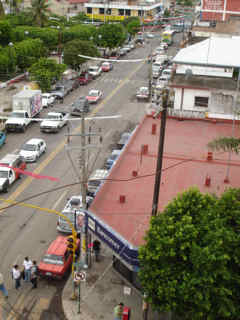 |
The day before the conference Rich and I squeezed into a tiny rental car with three adventurous ornithologists whom we met on the sidewalk outside the hotel and drove 40 minutes north to the little town of Cardel. Here one of the official Pronatura Veracruz hawk watches is perched on the top of a hotel in the heart of town where it makes a daily statement to every resident about the importance of this place to birds and conservation. We spent an hour or so in Cardel but the onshore winds were pushing the bulk of the hawks to the west towards the foothills of the mountains so we left to drive the 10 miles or so to the tiny community of Chichicaxtle where Pronatura Veracruz and the community have collaborated to build a two-story center beside the town soccer field.
Here was where we saw the River. It's hard to imagine but as we scanned the horizon we could see massive kettles of Broad-winged Hawks (more than 25% breed in the Boreal), Swainson's Hawks, and Turkey Vultures in the distance looking like specks of black pepper against the blue sky. And I don't use the term "massive" lightly here. These were kettles containing thousands of birds at a time and extending into streams of five and ten thousand or more birds passing over us for ten or fifteen minutes! In just a couple of hours we probably had seen somewhere in the neighborhood of 25,000 to 50,000 birds. It was almost too hard to comprehend, especially when you consider that in just this single afternoon we may have seen a huge proportion of the world's Broad-winged Hawks. You need to see it to believe it.
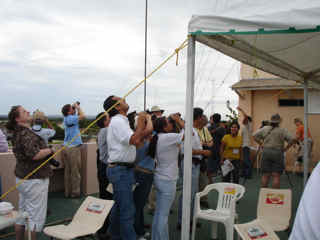 |
The conference itself was also amazing and a spectacle of abundance in it's own way.. It's not often that you get to spend a week with the majority of the ornithologists and bird conservationists of North America. The week was filled with smorgasbords of interesting presentations (six sessions going on simultaneously), evenings of poster presentations involving hundreds of posters covering every imaginable topic including Boreal birds, and tons of lively conversations with old friends and new acquaintances.
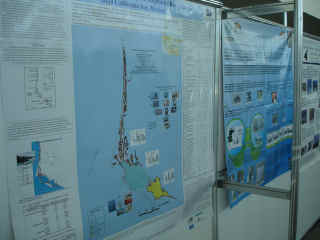 |
On Thursday night the Boreal Songbird Initiative had the pleasure of co-hosting a reception with International Migratory Bird Day (IMBD) to let people know more about the Boreal and about IMBD and the 2007 IMBD theme of Birds in a Changing Climate. Over 200 people attended including many of North America's leading ornithologists and bird conservationists. Thanks to the efforts of IMBD's Sue Bonfield, all of the presentations were presented in both English and Spanish and we heard talks from two Mexican environmental groups that are leading the charge in educating the public about conservation. It was a fun, enlightening, and inspiring evening.
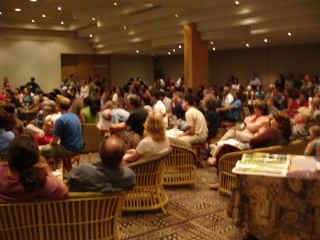 |
The next morning I chaired a symposium as part of the scientific sessions of the meeting entitled "The Boreal Birds: Threads That Tie Together Americas's Ecosystems." We had ten speakers representing some of the most interesting and cutting-edge scientific work related to Boreal birds. Julienne Morissette from Ducks Unlimited talked about the Boreal as "The Other Duck Factory." Jackie Paritte from the University of Oklahoma showed how the use of stable isotopes and genetic markers can determine the origins of wintering Boreal birds and Adrienne Leppold from Powdermill Avian Research Center presented the results of a just-completed analysis that examined the occurrence patterns of Boreal birds migrating across the eastern U.S. from banding data. Matt Wilson from USGS had a fascinating presentation on the remarkable discoveries he and colleagues have made by putting satellite tags on Surf Scoters wintering along the Pacific Coast.
Ian Davidson of BirdLife International wowed the audience with maps showing Important Bird Areas in the northern Andes of South America that are important wintering sites for Boreal birds like Olive-sided Flycatchers and Canada Warblers and Rich MacDonald described the vital role that Boreal birds may play in tropical ecosystems. Andrew Couturier from Bird Studies Canada showed a new application of information collected as part of the Ontario Breeding Bird Atlas for use in identifying important breeding areas for Boreal birds while Dan Mazerolle from the University of Alberta explained the newest modeling work to understand Boreal bird habitat relationships to help in conservation decision-making.
Jason Luscier from the University of Arkansas rounded out the program with the story of North America's fastest declining bird, the Boreal specialist Rusty Blackbird, and the great research that he and other members of the Rusty Blackbird Technical Group have begun. It's exciting to see the increasing and multifaceted research in Boreal birds and the creative application of new ideas to furthering our knowledge and ultimately our ability to do conservation for the Boreal.
Right after the symposium was finished I headed over to a restaurant across the street for lunch with some Mexican colleagues. As we passed through a part of the hotel grounds with some palms and fruiting trees we saw several people with binoculars peering up into the leaves. We stopped and within minutes we had seen American Redstart, Black-and-white Warbler, and Magnolia Warbler—all species with 25-50% or more of their breeding population in the Boreal. And foraging alongside these Boreal breeders were the birds that seemed exotic to me--Blue-gray Tanagers, Great Kiskadees, Social Flycatchers, and Tropical Kingbirds. Here on the hotel grounds in Veracruz, Mexico, ornithologists from Mexico, Canada, and the U.S. had made extraordinary efforts to come together to learn from each other, communicate, and spend time with each other. And yet, for the birds such a mingling was normal, part of a yearly cycle that has gone on for tens of thousands of years with or without humans.
A few days ago an agreement was reached between the Canadian government and the Lutsel K'e Dene First Nation to start the work to set-aside an eight million acre protected area on east side of Great Slave Lake in the Northwest Territories. This is the kind of visionary Conservation First leadership that matters most to our future, and though they don't know it, to the future of a world where a Magnolia Warbler and a Tropical Kingbird will feed together in a Mexican courtyard.
For a Schedule of Upcoming Events and Public Presentations Click Here
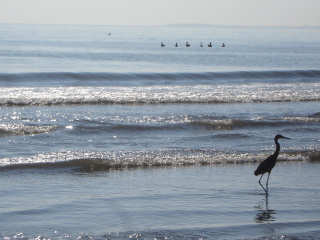 |

